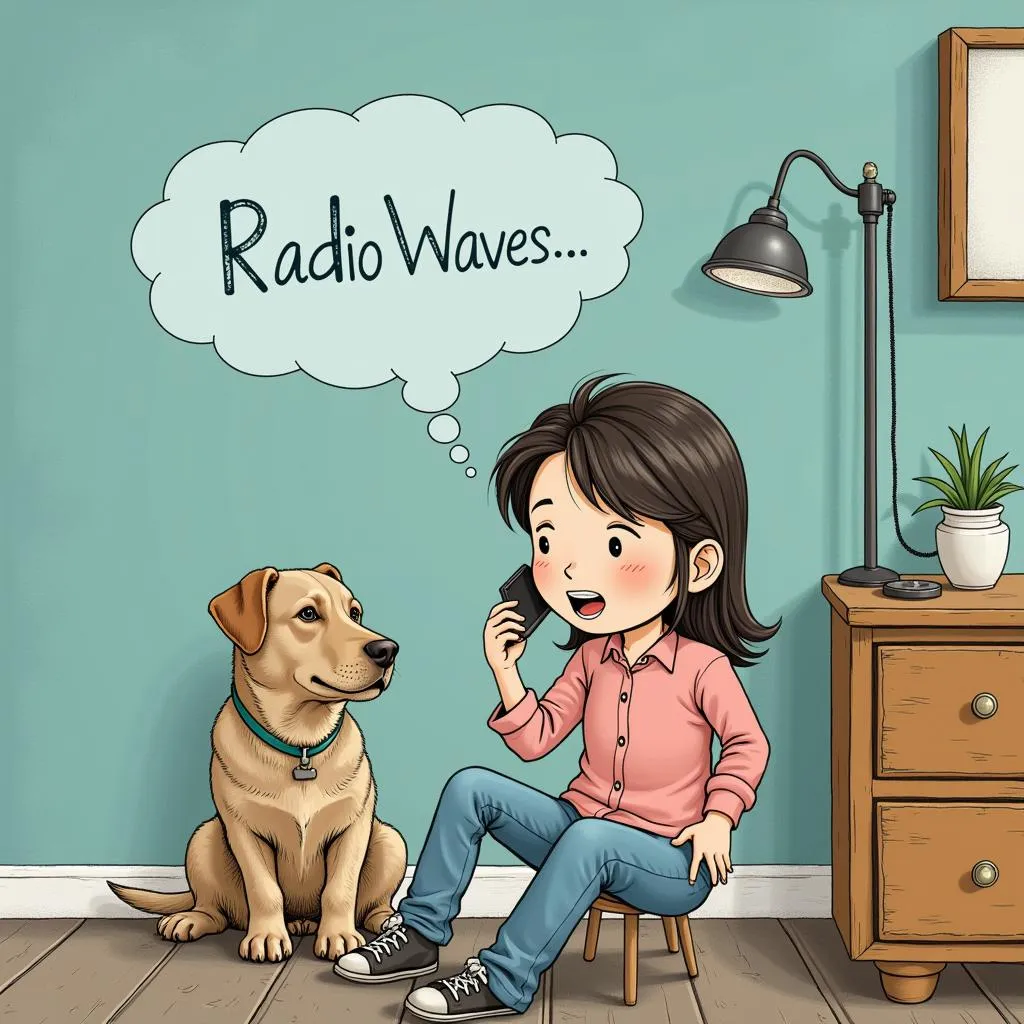Radio waves, a fascinating form of electromagnetic radiation, permeate our daily lives, enabling communication, entertainment, and scientific exploration. But even these invisible messengers have their limitations. Let’s delve into the intriguing question: where can’t radio waves travel?
Radio waves, like their siblings on the electromagnetic spectrum, are generated by the acceleration of electric charges. These waves, characterized by their varying wavelengths and frequencies, can traverse vast distances, seemingly defying barriers. However, their journey isn’t always smooth sailing. Certain materials and environments can significantly impede or even completely block their propagation.
The Unbreachable Barriers: Conductors and Faraday Cages
 Metal sheet blocking electromagnetic waves
Metal sheet blocking electromagnetic waves
Metals, renowned for their excellent electrical conductivity, pose a formidable obstacle to radio waves. When these waves encounter a conductive material like copper or aluminum, the electric field component of the radiation interacts with the free electrons within the metal. This interaction causes the electrons to move, effectively absorbing the energy of the radio wave and transforming it into heat. As a result, the radio wave is attenuated, losing its strength and failing to penetrate the conductor.
This principle forms the basis for Faraday cages, enclosures designed to block electromagnetic radiation. These cages, typically constructed from a continuous covering of conductive material, can effectively shield their interiors from external radio waves. The free electrons within the cage’s material redistribute themselves in response to the incoming electric field, effectively canceling out the field inside the enclosure.
Diving Deep: The Ocean’s Radio Silence
While radio waves effortlessly traverse the vast expanse of space, their journey through the Earth’s oceans is a different story. Seawater, with its high salt content, acts as a conductor, attenuating radio waves rapidly with increasing depth.
The absorption and scattering of radio waves by seawater depend on factors like the wave’s frequency and the water’s salinity and temperature. Lower frequency radio waves, like those used for submarine communication, can penetrate deeper than higher frequency waves. However, even these low-frequency waves face significant attenuation, limiting their range underwater.
Beyond the Horizon: The Earth’s Curvature
The Earth’s curvature also plays a role in limiting the range of radio waves, particularly those at higher frequencies. Unlike lower frequency waves that can diffract or bend around obstacles, higher frequency waves tend to travel in straight lines. Consequently, as the Earth curves away, these waves can lose contact with the ground, limiting their effective range for terrestrial communication.
The Enigma of Black Holes: Gravity’s Ultimate Trap
Black holes, celestial objects of immense density and gravitational pull, present an extreme example of an environment where radio waves, along with all other forms of electromagnetic radiation, cannot escape.
The intense gravity of a black hole warps the fabric of spacetime to such an extent that even light, the fastest entity in the universe, cannot escape its clutches once it crosses a boundary known as the event horizon. Radio waves, being part of the electromagnetic spectrum, are similarly trapped within a black hole’s gravitational grasp, unable to escape and reach observers outside this cosmic abyss.
Conclusion: The Boundaries of Invisible Messengers
While radio waves have revolutionized our world, their journey through the cosmos and even within our planet’s confines is not without obstacles. From the impenetrable barriers of conductors to the depths of our oceans and the extreme gravitational pull of black holes, several factors can impede or entirely block the propagation of these invisible messengers. Understanding these limitations is crucial for developing effective communication systems, exploring the universe, and unraveling the mysteries of environments where radio waves fall silent.
 Radio waves and a pet
Radio waves and a pet
FAQ: Unraveling the Mysteries of Radio Waves
-
Can radio waves travel through walls?
The ability of radio waves to penetrate walls depends on the wave’s frequency and the wall’s material. Lower frequency waves, like those used for AM radio, can generally pass through walls more easily than higher frequency waves, such as those used for Wi-Fi. Materials like concrete and metal offer more resistance to radio waves than materials like wood or drywall.
-
Do radio waves pose any health risks?
The potential health effects of exposure to radio waves are an ongoing area of scientific investigation. While radio waves are non-ionizing radiation and do not possess enough energy to directly damage DNA, prolonged exposure to high levels of radiofrequency radiation has been linked to some health concerns. Further research is necessary to fully understand the long-term effects of radio wave exposure.
-
How do astronomers use radio waves to study the universe?
Radio astronomy plays a vital role in our understanding of the cosmos. By studying radio waves emitted by celestial objects, astronomers can probe regions of space obscured from visible light telescopes. Radio waves can penetrate dust and gas clouds, revealing hidden objects like star-forming regions, pulsars, and active galactic nuclei.
-
What is the difference between AM and FM radio waves?
AM (Amplitude Modulation) and FM (Frequency Modulation) radio waves differ in how they encode information. AM radio waves vary their amplitude (strength) to carry information, while FM radio waves vary their frequency. FM radio generally offers better sound quality and less susceptibility to interference than AM radio.
-
Can radio waves travel faster than the speed of light?
No, radio waves cannot travel faster than the speed of light. Radio waves are a form of electromagnetic radiation, which travels at the speed of light in a vacuum, approximately 299,792,458 meters per second. Nothing in the universe can exceed this cosmic speed limit.
Exploring Further: Delving Deeper into the World of Waves
For those eager to delve deeper into the fascinating realm of waves and their behavior, numerous online resources and textbooks provide comprehensive information on electromagnetic radiation, wave propagation, and the science behind communication technologies.
Need further assistance? Contact us at Phone Number: 02223831609, Email: [email protected], or visit us at Đ. Nguyễn Văn Cừ, Trang Hạ, Từ Sơn, Bắc Ninh, Việt Nam. Our dedicated support team is available 24/7 to assist you.





